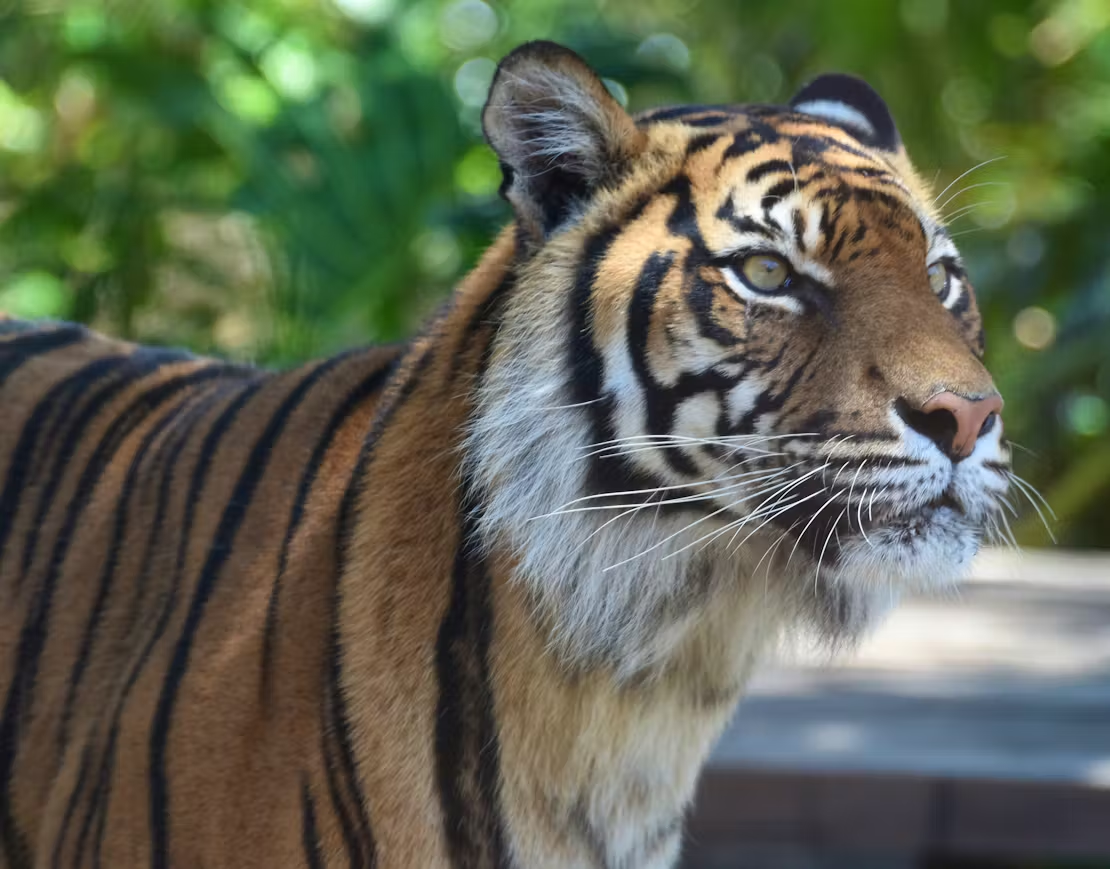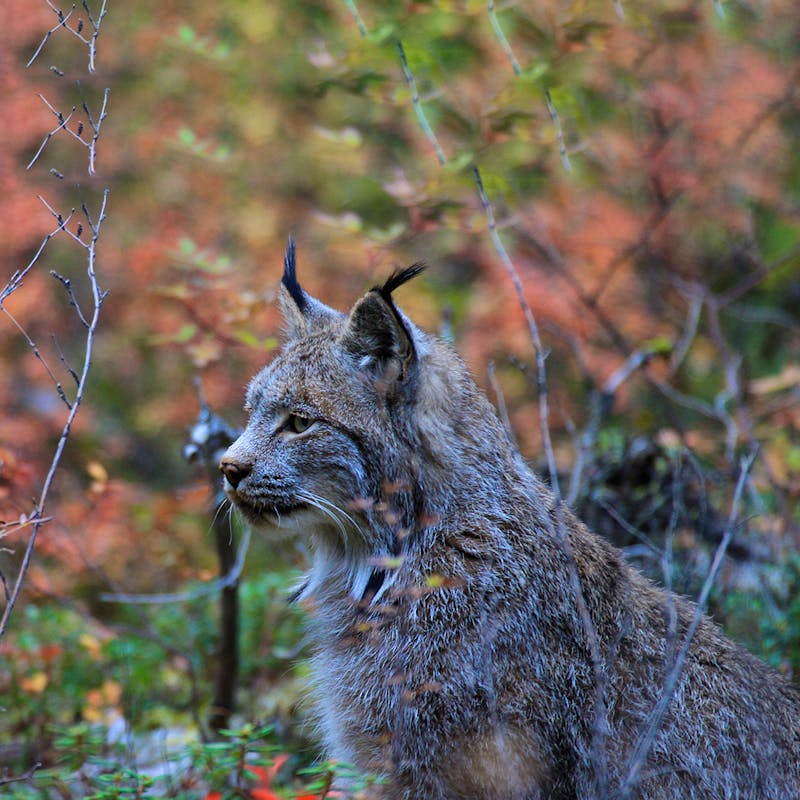Join our mobile Rapid Response Network!
You can be the first to hear about how we’re going to hold this administration accountable and how you can fight back for wildlife!
With Tiger King shedding light on how big cats can be forced into cruel, unnatural living situations when held in captivity, you can see why it's more important than ever to protect all big cats in the wild and to preserve and restore habitat for these amazing creatures. Defenders of Wildlife protects big cats in North America, like Florida panthers and jaguars, and we tirelessly advocate for human-wildlife coexistence, which should never include making wild animals pets. You can help support our efforts too.
The largest of the big cats, tigers are truly impressive animals with their black-striped orange fur and white bellies. A tiger’s stripe pattern is like a fingerprint and can be used to identify individuals.
The tiger is the largest member of the felid (cat) family. Tiger taxonomy was revised in 2017 based on new genetic analysis into two subspecies: Panthera tigris tigris, consisting of tiger populations in continental Asia, and Panthera tigris sondaica, including populations in the Sunda Islands.
Tigers face many threats. Their greatest threat is large scale loss of habitat and prey due to human encroachment and habitat degradation for agriculture. Climate change is also causing ocean levels to rise, reducing coastal habitat in areas like India’s Sunderban islands and forcing tigers to move into areas more heavily populated by people. In some parts of their range, tigers are poached because their pelts are valuable in the black market trade in Asia and their other body parts are used in traditional Asian medicine. Tigers are also killed or removed from the wild in efforts to protect livestock and human communities. Finally, as tigers recover in some regions, they come into contact more often with people, pets and livestock, which can increase human-wildlife conflicts if tigers and people are not proactively managed.

Defenders' Impact
Since tigers are not native to North America, Defenders does not work on their conservation directly. Defenders works to ensure that tigers remain protected under the Endangered Species Act, and under the Convention on International Trade in Endangered Species of Wild Fauna and Flora (CITES) highlighting their link to jaguar trade. Many of the threats facing Florida panthers and jaguars in North America, such as habitat loss, road kills and poaching, are also experienced by tigers. Because of this, we work closely with tiger conservationists to better enable human-wildlife coexistence by exchanging innovative and effective tools and technology for protecting livestock and people.
What You Can Do
You can help tigers through being a conscious shopping. Palm oil plantations are replacing tiger habitat in Southeast Asia, so read food ingredient labels to check if the palm oil in your product is sustainably grown. When traveling abroad, do not purchase souvenirs or gifts that may contain tiger products – even products made from ‘tiger substitutes’ can contribute to declines in other endangered species, so it is best to avoid wildlife products entirely. Finally, become big cat savvy by learning about imperiled big cats in North America like the Florida panther and jaguar.

About
Tigers live in 13 range countries across Asia. Tigers occupy a variety of habitats from tropical forests, evergreen forests, woodlands and mangrove swamps to grasslands, savannah and rocky country.
In the early 1900s, there were estimated to be around 100,000 tigers throughout their range. Today, around 4,000 tigers live in the wild, while roughly 5,000-7,000 exist in captivity.
Tigers are mostly nocturnal (more active at night) and are ambush predators that rely on the camouflage their stripes provide to stalk prey. Tigers use their body weight to knock prey to the ground and kill with a bite to the neck. They are also very good swimmers and have been known to drown their prey. Tigers are territorial and typically live solitary lives, except during mating season and while females raise young.
Mating Season: In tropical climates, mostly from around November to April; during the winter months in temperate regions.
Gestation: 103-105 days.
Litter size: 3-4 cubs.
Cubs follow their mother out of the den at around 8 weeks and become independent at around 18 months of age. They leave their mothers at about 2 ½ years. Mothers guard their young from wandering males that may kill the cubs to make the female receptive to mating.
Tigers mainly eat sambar deer, wild pigs, water buffalo and antelope. Old and injured tigers have been known to attack domestic cattle and people.
News









